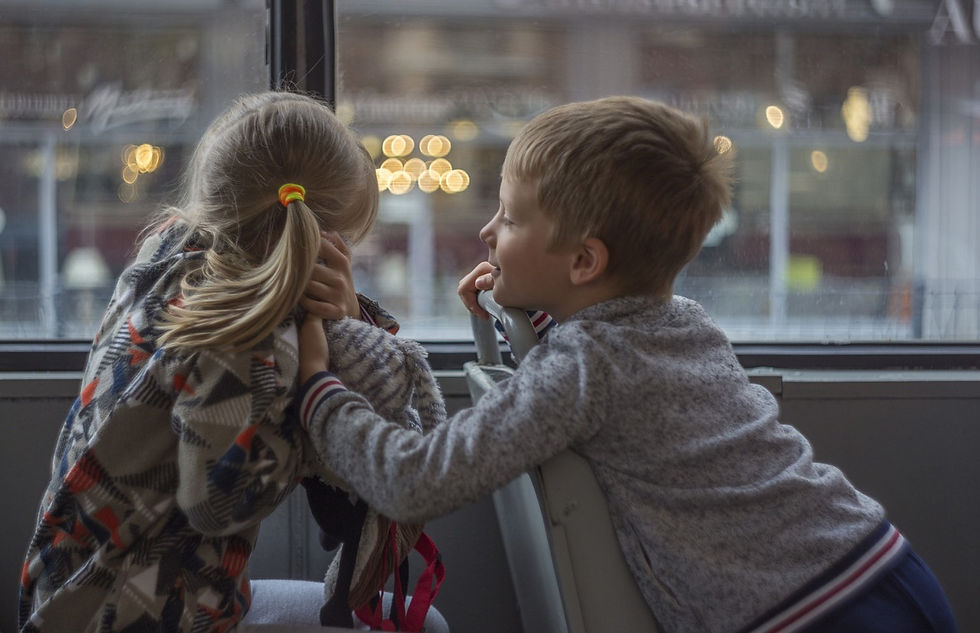Are we losing the art of conversation?
- martinagvisionfact
- Sep 2
- 4 min read
Author: Chiara Veri
The impact of technology on human interactions
Over the past few decades, technology has brought about a huge revolution in our daily lives, thus making communication more immediate and global. Thus, we are more and more digitally connected, but there is a growing fear that people are losing something very important to everyone's existence, namely the true art of conversation, present only in face-to-face conversation. Face-to-face interactions are indeed rich in emotional nuance, meaningful pauses, and nonverbal language, but it seems that all these features are slowly disappearing due to hasty and irrelevant text messages, emoji sent as responses to important messages, and push notifications.
Superficial conversations and isolation
Social platforms, messaging apps and video conferencing allow us to communicate with anyone we want at any time of the day or night. However, it is important to ask whether these digital interactions are really comparable to a real conversation, and the most logical answer is definitely “no,” as we increasingly find ourselves involved in fragmented exchanges of words or conversations filled with constant distractions, with a lack of depth and empathy and much more impersonal.
Moreover, a Harvard University study found that digital conversations tend to reduce the quality of active listening, this is because in a world where responses must be quick, there is often no room or interest for reflection or genuine, interested listening. In addition, this type of communication feeds a deep sense of isolation, even among people who interact online every day.
The value of listening and presence
The art of conversation is present not only in speaking, but also and perhaps especially in listening. Attention to what the other person is telling us and the ability to grasp what the person is hiding out of fear or shame are very important elements that invoke meaningful and deep communication. However, the disproportionate use of technology seems to undermine these positive characteristics.
For example, during a dinner with friends, it is now commonplace to see most people focused on their phones, distracted by what is happening around them and unable to remain present in the moment they are experiencing. This phenomenon is called phubbing (phone + snubbing) and is one of the most obvious manifestations of the loss of attention to other people and to real, authentic conversation.
Benefits and Risks of Digital Communication
Despite everything, it is unthinkable to deny that technology has also brought several benefits, as it has allowed distant people to stay in touch or, for example, those suffering from social anxiety to communicate with more freedom and less stress. In addition, it has opened up new spaces for confrontation and expression. However, if overused, technology risks replacing authentic and sincere relationships found only in the real world.
In addition, many young people, digital natives, are growing up with reduced or missing conversational skills. In addition, talking on the phone, sustaining a prolonged conversation or dealing with the silence that can arise from a dialogue can be a source of discomfort for some people. As efficient as online communication may be considered, it does not train empathy, respect in letting the other person speak, or understanding others' emotions in the same way.
Digital tools have made communication more accessible and inclusive, allowing people with disabilities, language barriers, or social difficulties to participate more fully in conversations. Digital tools have created spaces where people can express their diversity without fear of being judged, and those who feel excluded in traditional contexts can find a sense of belonging and security. In addition, these tools facilitate the rapid and immediate sharing of ideas and information, thus promoting collaboration across social and cultural distances. On the other hand, constant exposure to rapid and immediate online exchanges can encourage superficial interactions, thus leading to a reduction in human attention span and diminishing the depth and quality of discussions. This dynamic risks not only weakening real communication skills, but also diminishing the patience and empathy necessary to engage in meaningful, face-to-face dialogue.

Conversation as a skill to be preserved
Schools teach us to write and read, but the time has come to also teach intelligent conversation.This is because verbal communication is an essential social skill today, as it enables the building of deep relationships, stimulates critical thinking and contributes to our emotional well-being.
In addition, some schools are beginning to experiment with dialogue workshops, listening groups and discussion spaces that aim to awaken in the younger generation the pleasure of talking with others face to face. These projects allow us to understand that with the right conditions people can rediscover the beauty of talking and listening.

Technology and humanity: a possible coexistence
We are not talking about demonizing or eliminating technology, but rather redefining the role it knows our lives. It is important to learn how to use it as a tool, but not as a substitute for human relationships as they are unique.It is obvious that video calls can enrich a long-distance relationship, but they should not become the only means of interaction, just as social media can stimulate confrontation, but should not take the place of a face-to-face conversation.
The key to all of this situation is awareness, as it is important to know when the time comes to put aside one's cell phone and look the other person in the eye. Only in this way could we keep the art of conversation alive.
A glimpse into the future
We can see that the future of communication is not written, but it depends on how we ourselves decide to educate the next generation and, above all, how much value we decide to place on human dialogue. What's more, in a world that is changing as rapidly as ours, conversation remains one of the most powerful tools for growing together and dealing with conflict.
In conclusion, it is fair to say that we are not completely and irretrievably losing the art is conversation, but we are neglecting it.
It is time to slow down and get back to talking to each other, looking into each other's eyes.




Comments